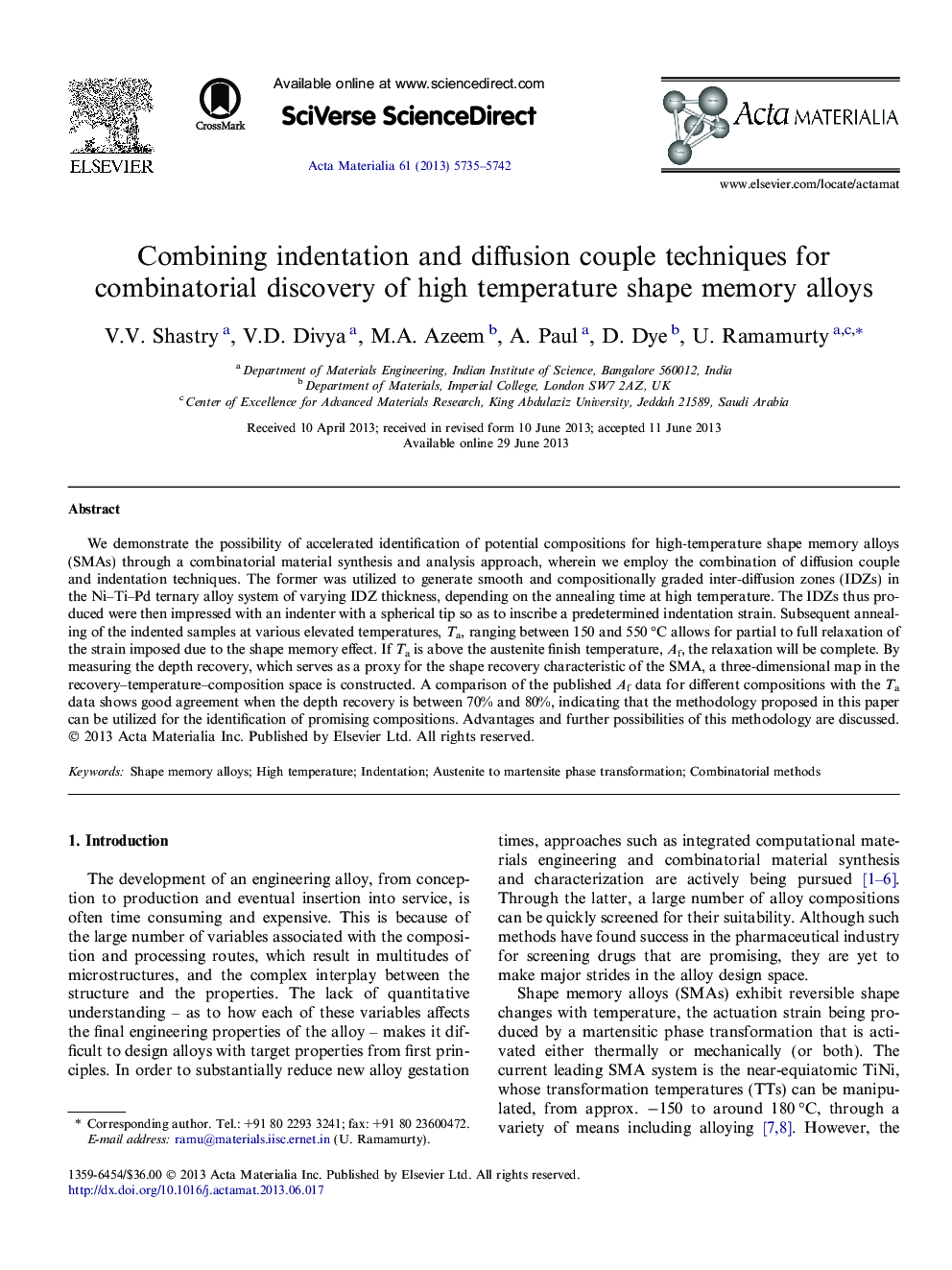| Article ID | Journal | Published Year | Pages | File Type |
|---|---|---|---|---|
| 1446154 | Acta Materialia | 2013 | 8 Pages |
We demonstrate the possibility of accelerated identification of potential compositions for high-temperature shape memory alloys (SMAs) through a combinatorial material synthesis and analysis approach, wherein we employ the combination of diffusion couple and indentation techniques. The former was utilized to generate smooth and compositionally graded inter-diffusion zones (IDZs) in the Ni–Ti–Pd ternary alloy system of varying IDZ thickness, depending on the annealing time at high temperature. The IDZs thus produced were then impressed with an indenter with a spherical tip so as to inscribe a predetermined indentation strain. Subsequent annealing of the indented samples at various elevated temperatures, Ta, ranging between 150 and 550 °C allows for partial to full relaxation of the strain imposed due to the shape memory effect. If Ta is above the austenite finish temperature, Af, the relaxation will be complete. By measuring the depth recovery, which serves as a proxy for the shape recovery characteristic of the SMA, a three-dimensional map in the recovery–temperature–composition space is constructed. A comparison of the published Af data for different compositions with the Ta data shows good agreement when the depth recovery is between 70% and 80%, indicating that the methodology proposed in this paper can be utilized for the identification of promising compositions. Advantages and further possibilities of this methodology are discussed.
